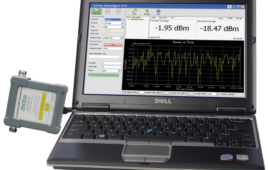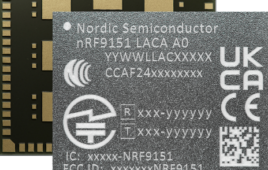Developed by researchers from the University of Nevada, Reno, a network of cameras identified and tracked over 240 wildfires across Nevada and Eastern California in 2017, helping firefighters respond quicker and more accordingly. The Nevada Seismological Laboratory developed the cameras as part of the AlertWildfire Network, which originally derived from the AlertTahoe system. The project originally started with a three-camera system in 2015, and has since expanded to four networks containing over 50 cameras that cover regions of the Sierra Nevada in both California and Nevada. The system’s network is looking to go online in Idaho and Oregon soon, while several other states have also inquired.
“The success of our system lies in our ability to deploy wireless, microwave technology to enable high-speed internet out in the wilderness,” says Graham Kent, director of the Seismological Laboratory in the College of Science. “Clearly, more systems are needed throughout the west. I’m happy with the AlertTahoe and BLM Wildland systems as prototypes, but there are plenty of other areas that are in dire need of this technology.”
Kent, along with his team and colleague Neal Driscoll from the University of California, San Diego, are currently focusing on bringing the system into the Sonoma/Napa area of Northern California, which was devastated by wildfires in 2017. The team hopes to officially begin expanding into the area this spring. Wildfires were especially destructive in 2017, scorching millions of acres that consumed forest and grassland, affected many communities, and claimed dozens of lives in states like California and Nevada.
Despite last year’s alarming figures, several communities along with millions of people and land acreage remain susceptible to being affected by future blazes. The AlertWildfire networks utilize and augment the Seismological Laboratory’s earthquake monitoring network, which intersects the third-most seismically active state in the U.S. (Nevada), and turns the seismograph recording sites into hazard monitoring networks available to track fires, floods, landslides, and other hazardous weather.
“With our private high-speed internet communications network in place, these sites also easily adapt to earthquake early warning detection systems that can provide public notification of expected, potentially damaging ground shaking,” Kent adds. “The system could be the backbone for a more resilient earthquake early warning system as the current ShakeAlert buildout is heavily leveraged on cellular technology.”
The system’s technology combines new and old methods. On mountaintops for example, cameras are now stationed with promise of better and more accurate coverage than their human predecessors provided, who relied on binoculars to look out for signs of fires while sitting in towers on these isolated summits. Having said that, these cameras aren’t replacing fire spotters, but are augmenting the system being deployed over many mountaintops within a given region. Utilizing existing radio communication towers, the Nevada Seismological crew installs the line-of-sight system, which includes HD cameras and microwave communications equipment. The Seismological Laboratory designed and installed the entire system, including the camera, antennas, solar/battery-powered systems, and enclosures containing all networking or control equipment to assure it works as a complete system.
“The advantage of having our own internet system is that we have high-speed broadband in places there isn’t any cellular coverage,” says Senior Systems Analyst for the earthquake monitoring and AlertWildfire networks David Slater. “Cellular coverage has limited bandwidth. Video required lots of bits to run and with a 1080p camera, we can blow through a cell plan amount in a couple of days. Even with cell service, we still couldn’t run our network to its full potential.”




